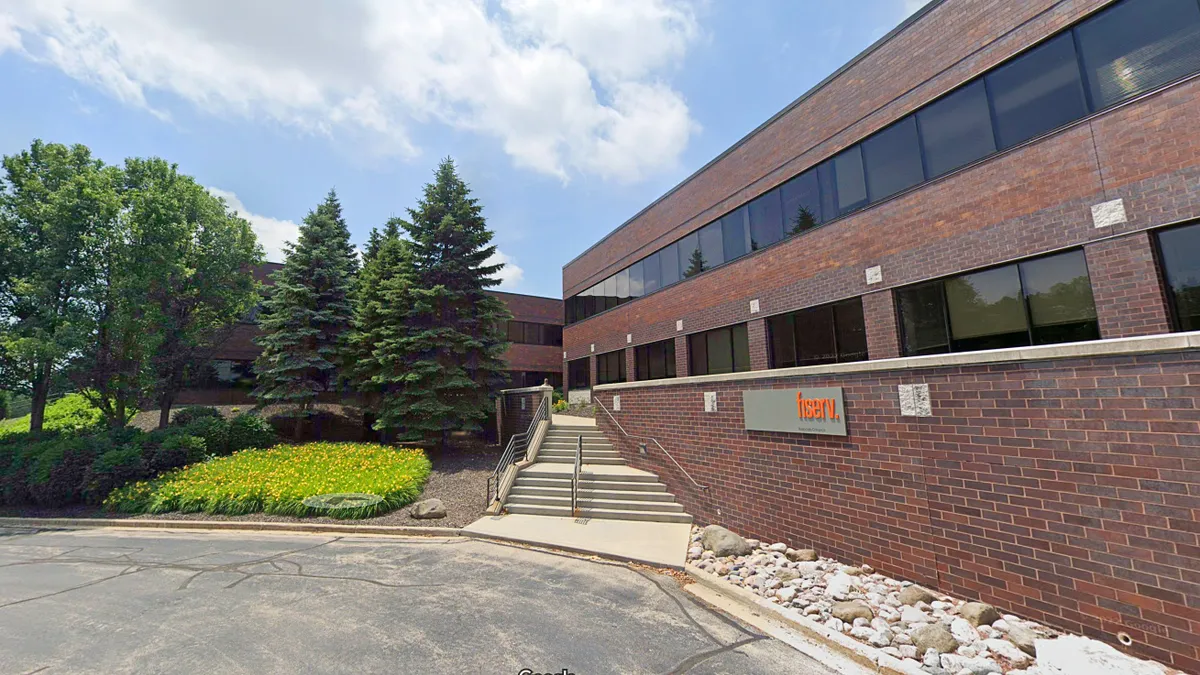The tapering of First Data integration costs, plus increased productivity, have Fiserv executives standing by their earlier projection to deliver expanded profit margin growth for the year, Chief Financial Officer Bob Hau said Wednesday.
That’s largely driven by the completion of merger and integration activity following Fiserv’s 2019 acquisition of First Data, Hau said during his Wednesday appearance at a UBS technology conference.
As the lengthy First Data integration continued into 2022, so did the costs associated with it, Hau said. Although “basic productivity” and revenue growth also bolster the company’s profit margin, the tapering of those merger and integration costs is the biggest component, Hau said. Winding down those costs led company executives to predict profit margin expansion ramping up in the third quarter and even more so in the fourth quarter.
Executives “feel good about our ability to deliver on those integration savings, finish those integration projects and drive productivity,” Hau said. Some profit margin expansion will come from the productivity boost of employees returning to offices, Hau said in October.
Fiserv CEO Frank Bisignano said in November the company is “maniacally focused” on expense management and will generate expanding margins. Faced with profit margin pressure earlier this year, Fiserv cut workers which resulted in higher severance expense.
The company also made divestitures in the third quarter, as it looks to optimize its portfolio, Hau noted. Fiserv sold its Korea operations in September for $50 million, as well as its Costa Rica operations and an IT business unit.
“We haven’t done a lot of those,” he said. “We will pare the portfolio periodically. It’s under regular review.”
Despite confidence in profit margin expansion and cost control, Fiserv is tracking the shifting economic landscape and considering how it could affect the company, he said. Fiserv is “watching for the shoe to drop,” Hau said. “So far, spending has held up.”
Although a recession is predicted for 2023, “the real data point is, how deep and how long?” Hau said. “That matters a lot more.”
Of the company’s three segments, fintech and payments tend to be most resilient as they are areas with high recurring revenue and long-term contracts, he said. Although competitor Fidelity National Information Services (FIS) has mentioned seeing an elongated sales cycle in bank IT, Hau said Fiserv has not seen that. “We continue to have a very strong pipeline, good progress toward signing contracts,” he said.
Fiserv’s merchant acceptance business, however, “is very dependent upon what’s going on with the consumer,” Hau said. “We’ll see some impact to that,” although factors, such as the geographic spread of the business, can help balance that, he added.
Executives remain “vigilant” with scenario planning and are considering various ways they can adjust if necessary when it comes to managing discretionary spending, he said.












